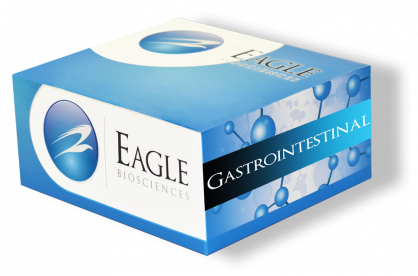Anti-Giardia Iamblia IgA ELISA Assay Kit
Anti-Giardia lamblia IgA ELISA Assay Kit is developed and manufactured in the USA
Size: 1×96 wells
Sensitivity: 1 U/mL
Dynamic Range: 0 – 100 U/mL
Incubation Time: 2 hours
Sample Type: Serum, plasma
Sample Size: 10 µL
For Research Use Only
Controls Included
Assay Principle
This Anti-Giardia Iamblia IgA ELISA is designed, developed and produced for the quantitative measurement of human anti-Giardia lamblia IgA in test specimen. The assay utilizes the microplate-based enzyme immunoassay technique by coating highly purified and inactive Giardia lamblia antigen onto the wall of microtiter well.
Assay standards, controls and unknown specimen are added to microtiter wells of microplate that was coated with a highly-purified Giardia lamblia antigen on its wall. The Giardia lamblia antigen will be bound to the antibody in the liquid standards, controls and test samples. The unbound matrices are washed away and a HRP-conjugated antibody which specifically recognizes the specific subtype of human antibody (IgA) is added for further immunoreactions. After an incubation period, an immunocomplex of “Giardia lamblia Antigen – human Anti-Giardia IgA– HRP-conjugated Anti-hIgA Antibody” is formed if the human anti-Giardia IgA is present in the test sample. The unbound tracer antibody and other protein or buffer matrix are removed in the subsequent washing step. HRP-conjugated tracer antibody bound to the well is then incubated with a substrate solution in a timed reaction and then measured in a spectrophotometric microplate reader. The enzymatic activity of the tracer antibody bound to the wall of each microtiter well is directly proportional to the amount of human Anti-Giardia lamblia IgA level in each test specimen.
Products Related to Anti-Giardia lamblia IgA ELISA Assay Kit
Human Anti-Giardia Iamblia IgG ELISA Assay Kit
Human Anti-Giardia Iamblia IgM ELISA Assay Kit
Giardia Iamblia Antigen ELISA Assay Kit



